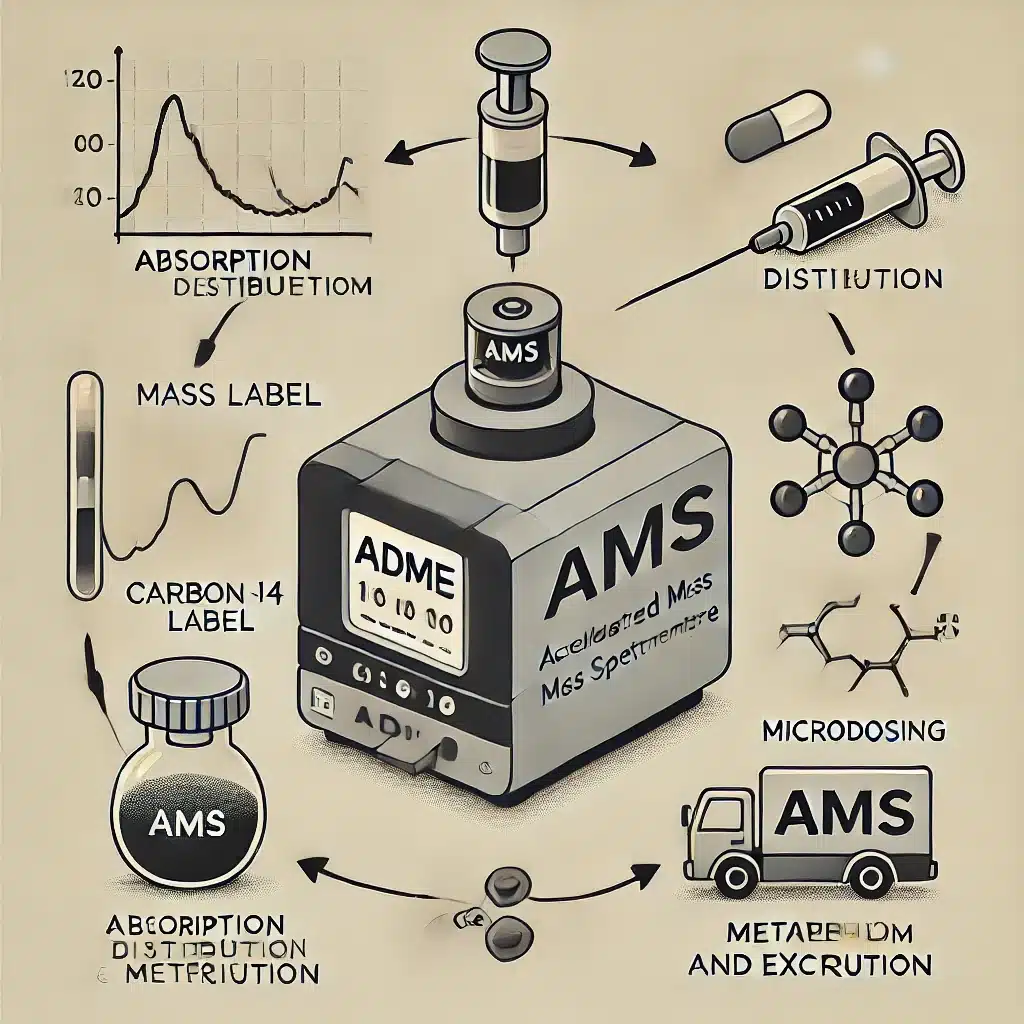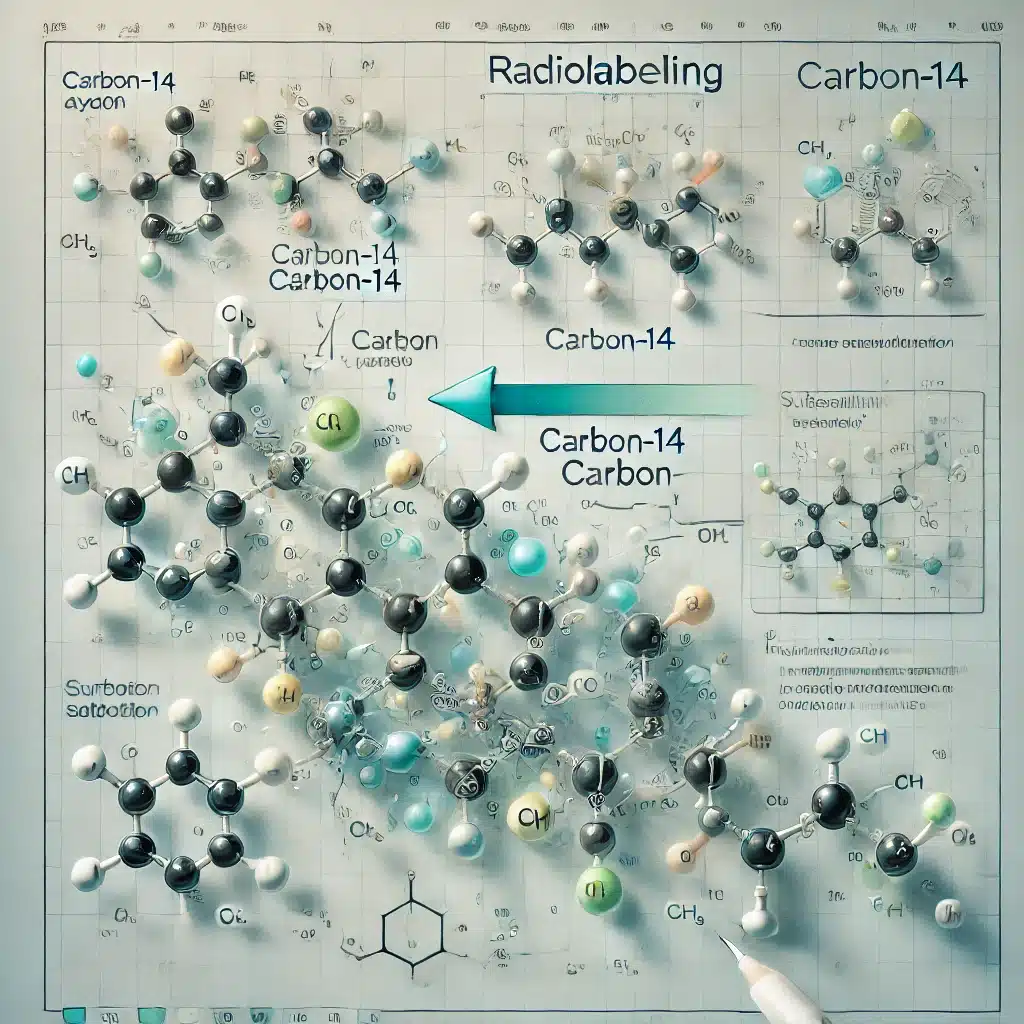Radiolabelling sits at the centre of nuclear medicine, connecting chemistry, biology and clinical care. Over the past few years, the field has grown at a remarkable pace, driven by new radiometals, improved chelators, innovative targeting approaches, advanced carriers and the rising influence of digital technologies. These developments are shaping more precise diagnostic imaging, more effective therapeutic options, and a smoother journey from the laboratory bench to the patient’s bedside.
The purpose of this article is to guide readers through the most significant trends of 2025, highlighting how radiolabelling is adapting to changing scientific expectations and expanding clinical needs. Whether used for a PET study, a SPECT scan or a targeted radiopharmaceutical therapy, radiolabelling is far from a routine procedure; it is now a rapidly evolving scientific discipline in its own right.
Cobalt and Zirconium Move Into Focus
Traditionally, radiolabelling has relied heavily on a familiar set of isotopes, such as fluorine-18, gallium-68, technetium-99m, and lutetium-177. These radionuclides remain essential, but new contenders are emerging as researchers seek isotopes that offer a better balance between imaging clarity, radiochemical stability and practical production.
Recent interest in cobalt isotopes is a strong example. Improvements in chelator technology have enabled the production of cobalt complexes that remain stable in the body and maintain strong interactions with their targeting molecules. Cobalt-55 shows encouraging imaging qualities, particularly for PET, while other isotopes from the same family are being explored for research and early-phase therapeutic applications. The combination of improved stability and favourable coordination chemistry has placed cobalt back into the spotlight for tracer design.
Zirconium-89 also continues to advance. Its long half-life makes it highly suited for antibodies and other large biological agents that circulate for extended periods. A major challenge has always been the long-term stability of Zr-89 chelates, but new DFO derivatives and alternative ligand structures are addressing this issue. These developments aim to lower bone uptake and increase resistance to decomplexation, allowing clinicians to gain clearer insight into how antibody-based agents behave in the body over time.
Smarter Target Selection for a Changing Oncology Environment
Cancer imaging has changed dramatically in the last decade, and radiolabelling methods are adapting with it. One of the clearest trends is the growth of tracers targeting structures found not only on tumour cells themselves but also in the surrounding microenvironment.
Fibroblast activation protein (FAP) inhibitors are among the most promising. These molecules bind to FAP, which is highly expressed on cancer-associated fibroblasts. PET tracers labelled with fluorine-18 or gallium-68 using FAP-targeting ligands produce clear, high-contrast tumour images, often within minutes of injection. Their rapid uptake and practical synthesis profile have encouraged hospitals around the world to evaluate their use for diagnosis, staging and future therapeutic pairing.
Integrin αvβ6 is another emerging target. This integrin is frequently expressed in aggressive epithelial cancers, making it a suitable marker for early detection and treatment planning. New tracers aimed at this target show strong affinity and encouraging imaging performance. For radiolabelling specialists, this trend represents a shift towards precision oncology, where tracers are no longer designed solely around tumour mass but also around tumour behaviour.
Changes are also evident in neuroscience. Tau PET tracers for Alzheimer’s disease have become far more refined, with reduced off-target binding and more predictable kinetics. These improvements make imaging results more reliable and allow clinicians to track disease progression with greater confidence. Radiolabelling of these tracers often relies on fast, efficient fluorine-18 reactions, and refinements in radiosynthesis have increased accessibility for radiopharmacies.
Nanoparticles and Alternative Carriers Expand the Toolkit
Radiolabelling has traditionally focused on small molecules, peptides, and antibodies. These remain essential, but interest in nanoparticles and polymer-based carriers has increased steadily. The attraction lies in their large surface area, their capacity for chemical modification, and their ability to encapsulate radionuclides safely.
Recent studies involving alginate-based micro- and nanoparticles are among the most striking examples. These carriers are being explored for use with alpha-emitting radionuclides, which have extremely high energy and require strong containment. Alginate structures provide a controlled environment that securely holds the radionuclide while enabling targeted delivery. This approach could open doors for new alpha-therapeutic strategies if long-term stability and distribution continue to improve.
Magnetic nanoparticles that incorporate radionuclides are also attracting interest. These materials offer the possibility of combining MRI and nuclear medicine into a single imaging approach. Advances in surface functionalisation mean that radionuclides can be attached or embedded without compromising magnetic performance. Although they remain in early-stage development, these hybrid systems demonstrate how multidisciplinary research is reshaping radiolabelling.
AI Begins to Support Radiochemistry and Radiopharmacy
Beyond chemistry, digital tools are now influencing how radiopharmaceuticals are designed, produced and monitored. Artificial intelligence has already found a place in image reconstruction and segmentation, but its role in radiolabelling workflows is expanding rapidly.
In radiochemistry laboratories, machine learning models are used to predict yields, identify factors associated with failed syntheses, and evaluate trends in equipment performance. For busy radiopharmacies, this kind of predictive support reduces waste, improves batch consistency and helps maintain regulatory compliance.
AI is also gaining attention in dosimetry. Traditional dosimetry often requires several imaging time points taken over many hours or days. Emerging AI-based techniques can derive three-dimensional dose maps from a limited number of images, often from simple planar studies. This approach can simplify treatment planning for targeted radiopharmaceutical therapies and make the procedure more accessible in clinics with limited imaging resources.
The design of new radiolabelled molecules is another area where computational tools are making progress. By predicting ligand–target interactions, modelling radionuclide coordination and simulating pharmacokinetics, AI systems can evaluate thousands of potential tracer designs long before laboratory trials begin. This capability allows researchers to focus on the most promising candidates, significantly reducing early development time.
Production Constraints and Regulatory Pressures Shape Development
The scientific advancements described above are occurring within a challenging production environment. Global demand for isotopes such as molybdenum-99, fluorine-18, gallium-68, and lutetium-177 continues to grow, yet production facilities remain limited, and the maintenance of older reactors remains an ongoing concern. This pressure has encouraged the exploration of accelerator-based production methods for copper-64, scandium-44, terbium isotopes and actinium-225. Several pilot facilities have already demonstrated consistent output, though full-scale clinical supply will require further investment.
Radiopharmacies are also facing increasing regulatory expectations. Automated synthesis modules, robotic manipulators and digital batch records are becoming more common as laboratories strive to maintain accuracy and accountability. While these systems require training and financial investment, they also reduce human error and help maintain GMP standards in environments where radiolabelling processes are growing more complex.
Theranostics Strengthens the Link Between Imaging and Therapy
One of the strongest trends shaping radiolabelling today is the growing integration of diagnostic imaging and targeted radiopharmaceutical therapy. Modern clinical practice increasingly requires tracers that behave consistently across both modes, supporting more personalised treatment planning.
Chelators are now being designed to accommodate both diagnostic isotopes, such as gallium-68, and therapeutic metals such as lutetium-177 or terbium-161. This dual-compatibility means that the same biological vector can be used for initial patient selection, treatment delivery and post-therapy monitoring. Research into alpha-emitting isotopes has also grown, particularly interest in actinium-225 and lead-212, which offer significant therapeutic power when paired with matching imaging isotopes.
This alignment between imaging and therapy places radiolabelling at the heart of personalised oncology, allowing clinicians to make more accurate predictions about treatment response and to adjust therapy as needed.
A Broader Biological Perspective for Molecular Imaging
As precision medicine expands, radiolabelling is increasingly used to study the tumour microenvironment. Instead of focusing solely on tumour cells, tracers can target immune cells, stromal components, extracellular matrix enzymes and other features that influence disease progression. This shift reflects a broader understanding of cancer as a complex biological system rather than a single target.
Radiolabelling strategies must therefore support tracers with faster kinetics, higher specificity and improved metabolic stability. As these tracers move closer to clinical use, radiopharmacies must adapt their practices to handle a more diverse and challenging set of compounds.
A Field in Rapid Motion
Radiolabelling in 2025 is marked by diversity: new radiometals, enhanced chelators, advanced carriers, integrated digital tools and shifting clinical priorities. Together, these developments point to a future in which radiolabelling is more adaptable, patient-centred and scientifically sophisticated than ever before.
For clinicians, these changes promise clearer scans, more effective treatments and better ways to personalise therapy. For researchers, the expanding toolkit opens up new opportunities to explore biological processes in greater detail. And for radiopharmacies, the move towards automation, AI support and improved production methods sets the stage for safer, more reliable and more efficient practice.
Radiolabelling remains a core part of nuclear medicine, but it is now also a vibrant area of innovation with far-reaching implications. As these trends continue to mature, the field is well-positioned to support the next generation of diagnostic and therapeutic breakthroughs.
Disclaimer
This article is intended for informational and educational purposes only. It provides a general overview of current research directions, technological developments and clinical trends in radiolabelling as of 2025. It does not constitute medical, scientific, regulatory or professional advice, and should not be used as a substitute for consultation with qualified specialists in nuclear medicine, radiopharmacy, radiochemistry or related fields.
Radiopharmaceutical development, handling and clinical use are subject to strict regulatory, safety and operational requirements. Readers must follow all applicable laws, professional standards and institutional guidelines when working with radioactive materials or applying any methods described. The technologies, compounds and procedures referenced in this article may be experimental, may not be approved for clinical use in all regions, and may involve risks that require expert oversight.
Open MedScience does not endorse specific products, equipment, suppliers or clinical practices, and cannot guarantee the accuracy, completeness or currency of the information provided. Research findings and regulatory frameworks may change rapidly, and readers are responsible for verifying details independently.
No liability is accepted for any loss, damage or adverse outcome arising from the use of information contained in this article. Readers should seek specialist advice before making decisions related to clinical practice, laboratory work, procurement, or research involving radiolabelling or radiopharmaceuticals.
You are here: home » diagnostic medical imaging blog »



